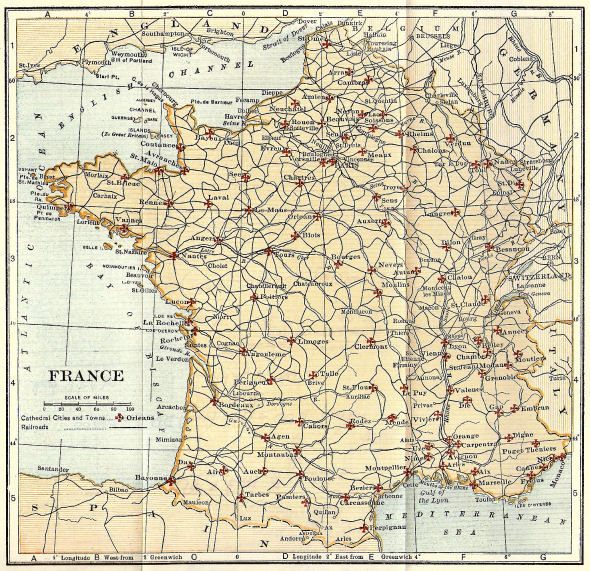 |
 |
 |
 |
 |
|||
 |
 |
 |
Cathedrals and cloisters of France |
||
|
|
||
|
|
An American, Elise Whitlock Rose, made a grand tour of France studying and recording her findings and impressions of the many cathedrals in France, together with their cloisters. She published her studies as a series of four sets of books, each in two volumes, for
The books were first published progressively from 1906. The last volume was published in 1914, the United States being then still unaffected by World War One, and Elise Whitlock Rose having finished her researches in France in time. The books were splendidly photographically illustrated by Elise Whitlock Rose’s friend, Vida Hunt Francis. Vida used platinum-based film, which provides very detailed images of great durability. Despite comments from others that Rose’s books are not good, the Cathedrals and Cloisters series is the most useful set of books on French cathedrals I have found. the booksPublished by G. Putnam’s Sons, under the imprimatur of the Knickerbocker Press, these books came in two editions. There was a cheaper version with blue cloth covers and red printing. There are also available several modern facsimiles and scanned, then printed, versions of highly variable quality. There are also some scans of varying quality on the Internet. There are some reasonable web versions that can give an idea of the photographs, but the reproductions tend not to be as subtle as the platinotype-derived pictures in the original books.
The superior version was
$5 in current terms would be more like, at least, $200 in modern money [2012]. The few copies that are now available usually sell in the $30 to $50 range for a two-volume sub-set. While they can often be found in fairly clean and usable state, their construction tends to mean that they are a little tired and the gilded covers have lost their sparkle from handling and sun damage. This is especially true of the head and base of the spines, which show more wear and will be chipped.
The boxes, or rather cardboard slip covers, are now very rarely seen, as they tend to break over time and were discarded. The paper of the pages was also of a finer quality than the cheap version. The books were supplied unguillotined [untrimmed] so the fore edge of the book is uneven, sometimes with unseparated pages, unlike the cheap version. |
|
||
map of cathedrals in France, 1910I think that Elise Whitlock Rose may have been a medical doctor. She may have originated from Pennsylvania. She probably changed her first name from Eliza. She was identified on official consular documents between 1907 to 1918 as "Miss", despite continually referring to herself as "the Traveller", and appearing to hint that she was male in one or two passages.
The name, Elise Whitlock-Rose, also appears in Catholic World accompanying an article dated May, 1935, on p.223. Her father was called Wilbur Fish Rose, born in 1866. In 1930, he resided in Philidelphia. If any reader has more information, please emai abelard [at] abelard.org. 1870-1957 Vida Hunt Francis came from Philadelphia, Pennsylvania. She graduated in 1892 from Smith College where she studied photography and platinum printing [platinotype] with Charles Pancoast and John C. Bullock. Vida photographed throughout Europe, the Middle East, and the United States. She was commissioned by G. Putnam’s Sons to make the photographic illustrations in The Cathedrals and Cloisters of France. [Vida’s surname Francis is sometimes spelt Frances.] Usually, black and white photographic prints are made using silver salts suspended in a gelatine or albumen emulsion that coats the paper. Platinotype photos use a more valuable metal - platinum, often combined with palladium. The metal salts are coated directly on the paper without an emulsion carrier. As there is no emulsion support involved, the resulting photographic print is entirely matt,with the metal salts being partially absorbed into the paper surface in the final print. The result is a picture with warm velvety-black tones, while the tonal range - from dark, through mid-tones to light - is greater, providing a more subtle range of tones. Platinum prints are the most durable of photographic print processes. Thus, in theory, when manufactured correctly platinum prints can last thousands of years. However, platinum prints produced in the later 19th century and early 20th century were often made on rag paper, and so have deteriorated badly. The basic platinotype process is called the "hot bath" method. Most platinum prints are made this way. Here, a mixture of ferric oxalate and finely precipitated potassium chloroplatinate is coated onto paper. This is exposed to light through a negative and then developed in a warm potassium oxalate solution. Making platinum prints stopped as the price of platinum shot up at the beginning of the 20th century. The major photographic manufacturer in the United States, Kodak Eastman, stopped manufacture in 1916. Most platinotype photography stopped at the start of the First World War as available platinum stocks were required for high explosive manufacture. Since then, palladium has been used instead in a similar fashion, giving deeper, warmer blacks and a wider tonal range. |
||||
| You are here: The Cathedrals and cloisters of France < France < Home |
© abelard, 2012, 2 october the address for this document is https://www.abelard.org/france/elise_whitlock_rose.php |


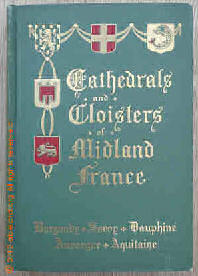



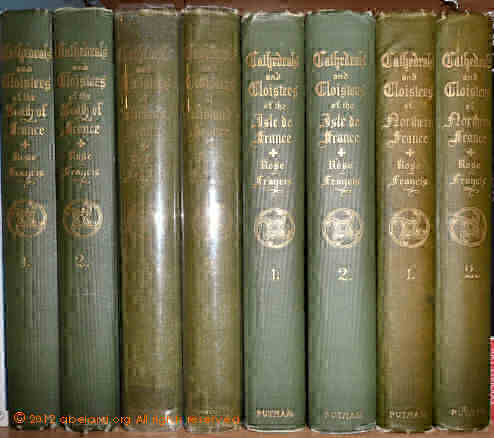

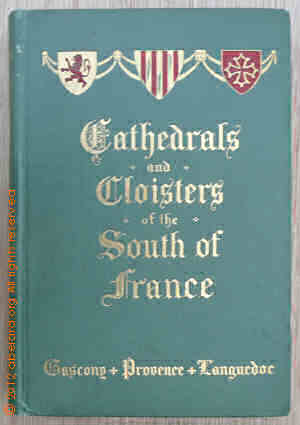 Cathedrals and cloisters in the South of France
Cathedrals and cloisters in the South of France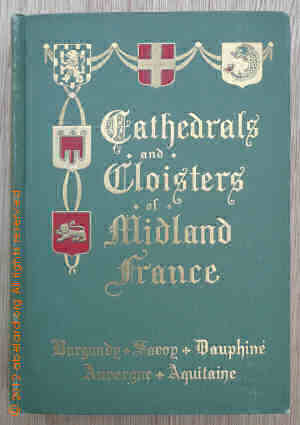 Cathedrals and cloisters in Midland France
Cathedrals and cloisters in Midland France
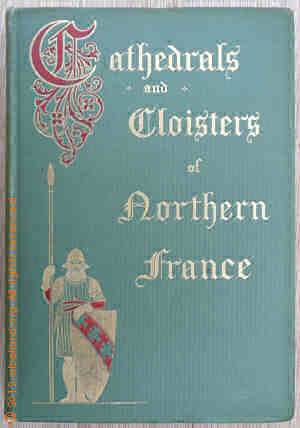 Cathedrals and cloisters of Northern France
Cathedrals and cloisters of Northern France
